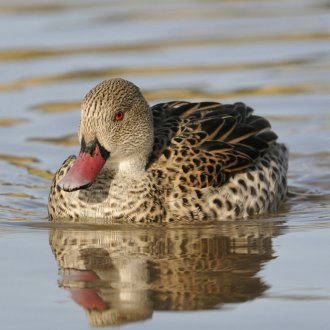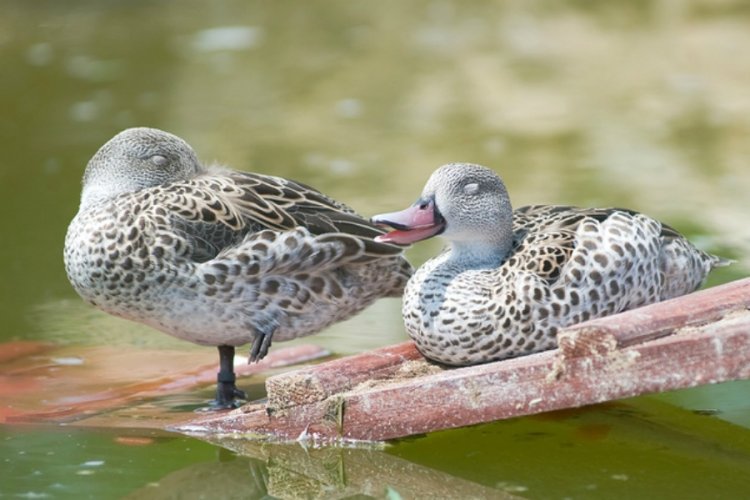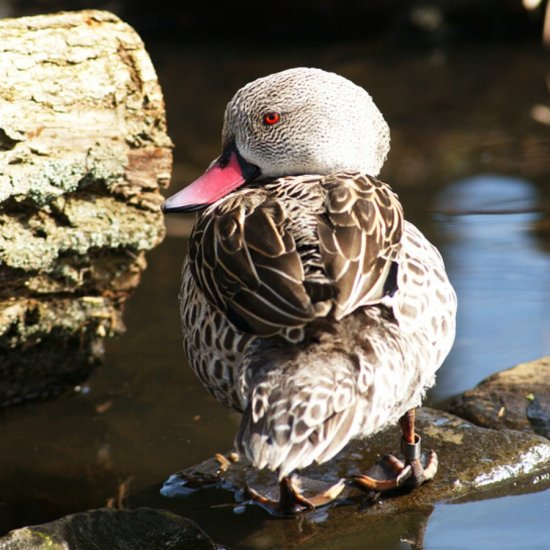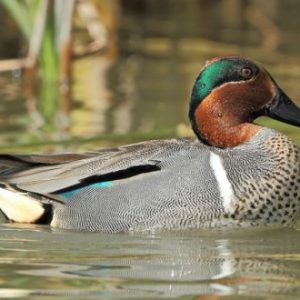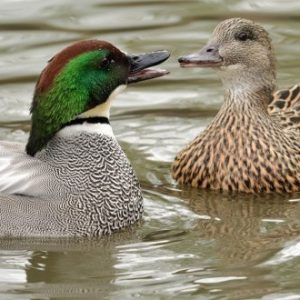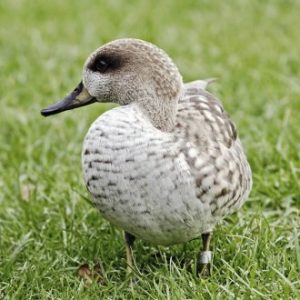Cape Teals Anas capensis are quite easy to keep and breed in captivity, especially if you are in a mild climate. Even in areas with harsh winters, these birds usually thrive with some simple winter protection and a heat source. Cape Teals are also not aggressive and get along fine with other species in a mixed collection.
As with most species of ducks from southern locales, male and female Cape Teal look very similar. The males are just a bit larger in general and have slightly brighter colored bills and slightly darker plumage. The male doesn’t go into eclipse plumage, so the birds will look fully colored year-round.
Cape Teals are compact ducks with gray and brownish-fawn laced and mottled plumage. The speculum or colored wing patch is bright green and black with a striking white border. The most memorable features of this relatively subtle duck are the pick bill and red eyes.
Range: Cape Teals are native to Southern Africa.
Habitat: Cape Teals are relatively non-migratory, moving to follow rain and resources rather than seasonally. They are most often found in open wetlands, marshes, shallow lakes, estuaries, and tidal flats.
Status in the Wild: IUCN lists the Cape Teal Duck as being of Least Concern, as they are not endangered and are quite widespread in their native ranges.
Status in Aviculture: Cape Teals are very popular ducks to keep.
Breeding: Cape Teals have a long breeding season that can start their first year, although they usually start laying in their second year. They are ground nesters and appreciate grass and vegetation for seclusion during incubation. Clutch size is between 6-10 eggs. Incubation takes 25-26 days. Both parents take a part in caring for the ducklings, and will aggressively defend them. Cape Teal ducklings are strong and hardy in general and are easy to raise successfully.
Lifespan: Cape Teal Ducks can live 20-30 years
Size: Cape Teals are 12-14 inches in length and weigh 11-18 ounces at maturity.
Housing Requirements: Cape Teal are hardy and adaptable and very undemanding to keep. AS natives to Southern Africa, they do need some protection in colder climates. They will also need access to water for swimming and deep enough for diving. ThevCape Teal spends much of its time in the water. Aviary or enclosure should be covered as these ducks do fly and should provide adequate protection against predators.
Diet: The typical wild diet of the Cape Teal Duck would consist of water plants, crustaceans, insects, and tadpoles. They also consume plankton and other microscopic organisms by straining water through their serrated bills. A well-balanced, high-quality waterfowl diet would suffice in captivity, but providing access to a naturally diverse water source would be ideal.
Miscellaneous Notes: Cape Teals are classified as Dabbling Ducks, but they also officially dive. Usually Dabbling Ducks swim underwater using their wings, but Cape Teal swim under the water with their wings closed, in the stream-lined and efficient style of Diving Ducks.

